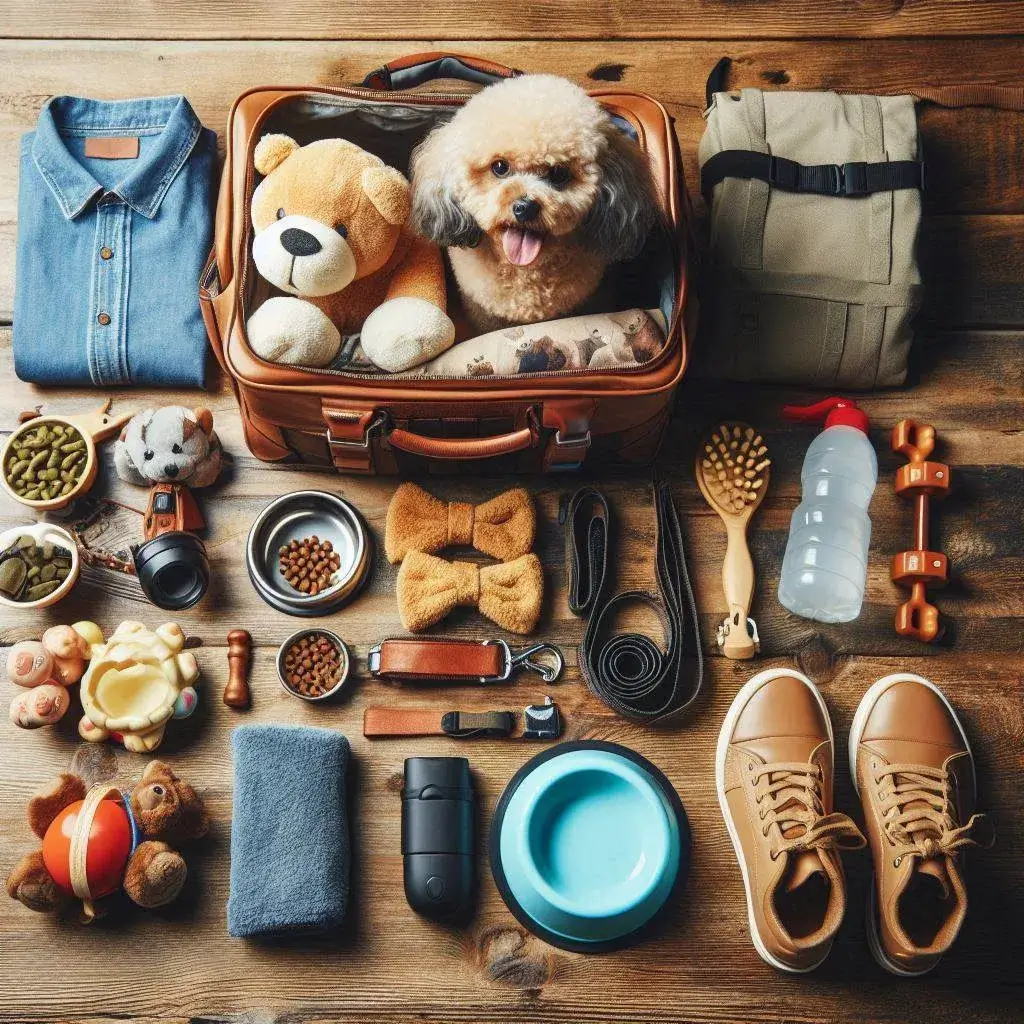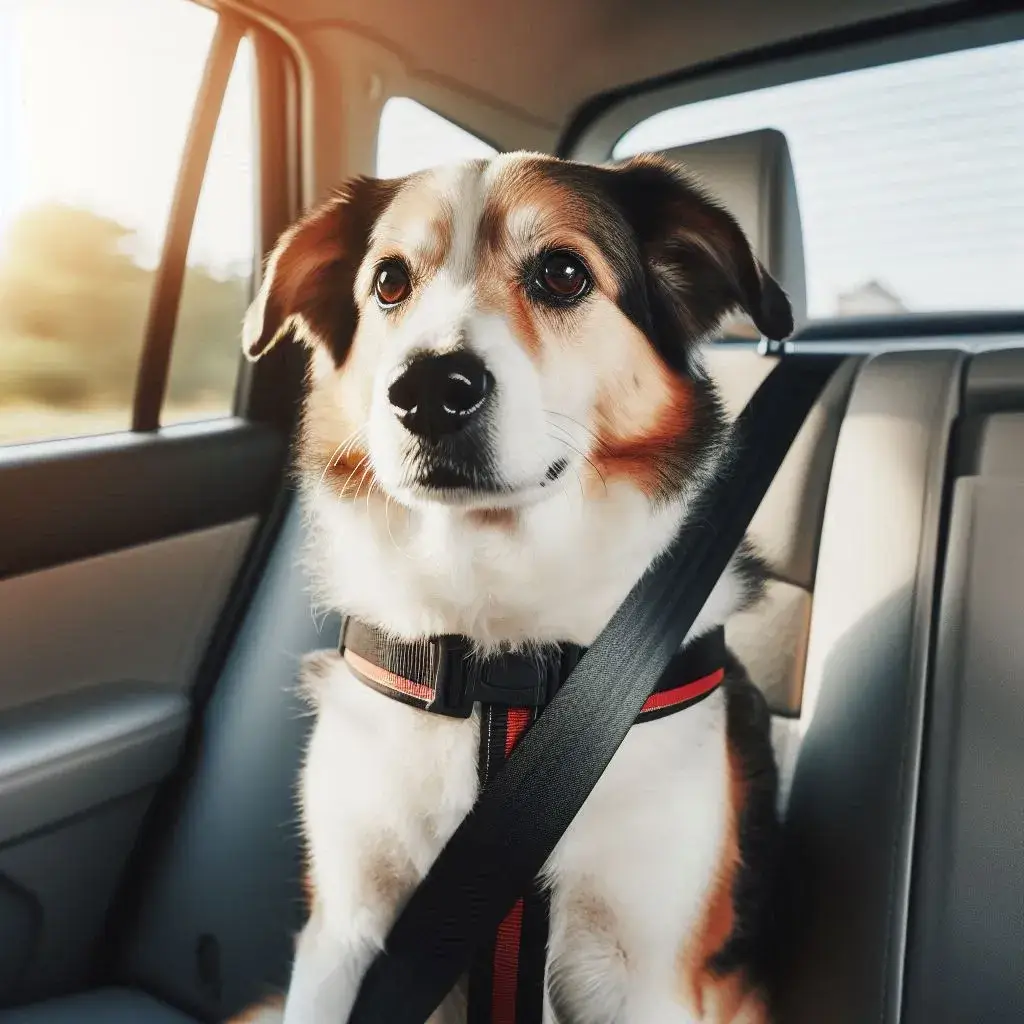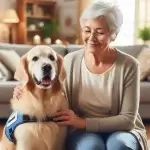Traveling with your adopted dog can be a wonderful experience, offering both you and your pet the opportunity to explore new environments and create lasting memories together. However, it also requires careful planning and consideration to ensure that your dog remains safe, comfortable, and happy throughout the journey. Whether you’re planning a road trip, flying, or even taking public transportation, this comprehensive guide provides all the tips and advice you need for a successful trip with your adopted dog.
Why Traveling with Your Adopted Dog Requires Special Consideration
Adopting a dog often comes with unique challenges, as adopted dogs may have experienced previous trauma, stress, or anxiety. Understanding your dog’s specific needs and behaviors is crucial when planning any trip.
Understanding Your Dog’s Temperament
Every dog is different, and understanding your adopted dog’s temperament will help you prepare better for the journey.
- Anxiety Levels: Some adopted dogs may have higher anxiety levels, especially if they’ve had a difficult past. Identifying triggers and managing stress is vital for a peaceful trip.
- Adaptability: Some dogs adapt quickly to new environments, while others may struggle with change. Knowing your dog’s adaptability can help you plan more effectively.
Considering Your Dog’s Past Experiences
If your dog has had a history of neglect, abuse, or multiple rehoming experiences, they might be more sensitive to changes. It’s essential to create a familiar and reassuring environment during travel to minimize stress.
Preparing for the Trip

Preparation is key to ensuring a smooth and enjoyable journey with your adopted dog. This section covers the essentials you need to address before embarking on your trip.
Visit the Veterinarian
Before traveling, it’s crucial to have your dog checked by a veterinarian. This ensures they are healthy enough to travel and up-to-date on vaccinations.
Health Checkup
Schedule a full health checkup to rule out any underlying health issues that could be exacerbated by travel. Discuss any concerns you might have, such as motion sickness or anxiety.
Vaccinations and Preventatives
Make sure your dog is up-to-date on all vaccinations, and consider any additional vaccines that may be necessary depending on your destination (e.g., rabies, Lyme disease). Also, ensure your dog is protected against fleas, ticks, and heartworms.
Health Certificate
If you’re flying or crossing state or country borders, you may need a health certificate from your vet. This certificate usually needs to be issued within a certain timeframe before your trip.
Packing Essentials for Your Dog

Just like you, your dog needs a well-packed travel bag. Here’s a list of essentials to bring along:
Food and Water
- Sufficient Food Supply: Bring enough food for the entire trip, plus a little extra in case of delays. Stick to your dog’s regular diet to avoid digestive issues.
- Portable Water Bowls: Collapsible water bowls are convenient and ensure your dog stays hydrated throughout the journey.
- Treats: Pack some of your dog’s favorite treats to reward good behavior and provide comfort during the trip.
Comfort Items
- Bedding or Blanket: Bring your dog’s favorite bed or blanket to provide a sense of familiarity and comfort, especially during rest stops or overnight stays.
- Toys: Pack a few toys to keep your dog entertained and reduce stress. A favorite chew toy can be particularly helpful.
Safety Gear
- Leash and Harness: Ensure you have a sturdy leash and a well-fitting harness. A harness is often more secure than a collar and reduces the risk of choking if your dog pulls.
- Seat Belt or Crate: For car travel, a dog seat belt or a well-ventilated crate is essential to keep your dog safe during the drive.
First Aid Kit
Pack a first aid kit tailored for your dog, including items like bandages, antiseptic wipes, tweezers, and any medications your dog might need. It’s also wise to include your vet’s contact information and the number of an emergency vet near your destination.
Plan Your Route and Accommodations
Carefully planning your route and accommodations ensures that your dog’s needs are met throughout the journey.
Dog-Friendly Accommodations
Research and book dog-friendly accommodations in advance. Many hotels, motels, and vacation rentals welcome pets, but they may have specific rules or fees.
Rest Stops
Plan for regular rest stops every 2-3 hours to allow your dog to stretch, relieve themselves, and get some fresh air. Look for rest areas with designated pet zones.
Pet-Friendly Restaurants
If you’ll be dining out, research pet-friendly restaurants along your route or at your destination. Many places with outdoor seating allow dogs, but it’s always best to check beforehand.
Traveling by Car with Your Adopted Dog
Traveling by car is one of the most common ways to travel with a dog, offering flexibility and comfort. Here’s how to make the journey as smooth as possible.
Ensuring Your Dog’s Safety in the Car

Safety should be your top priority when traveling by car.
Using a Crate or Carrier
A well-ventilated crate or carrier provides a safe space for your dog during the trip. It also prevents your dog from distracting you while driving. Make sure the crate is large enough for your dog to stand, turn around, and lie down comfortably.
Using a Dog Seat Belt
If you prefer not to use a crate, a dog seat belt harness is a great alternative. It keeps your dog secure and prevents them from roaming around the car, which can be dangerous.
Avoiding the Front Seat
Keep your dog in the back seat to avoid injuries caused by airbags in case of an accident. Even with a seat belt, the front seat is not the safest place for your dog.
Managing Car Sickness and Anxiety
Car sickness and anxiety are common issues when traveling with dogs, especially if they are not used to long car rides.
Gradual Acclimatization
Before embarking on a long trip, take your dog on shorter car rides to help them get used to the motion. Gradually increase the duration of these rides.
Using Anti-Nausea Medications
If your dog suffers from motion sickness, talk to your vet about anti-nausea medications. These can help prevent vomiting and discomfort during the drive.
Providing Comfort and Distractions
Bring along your dog’s favorite blanket or toy to provide comfort. Playing soft music or offering a chew toy can also help keep your dog calm and distracted.
Maintaining a Comfortable Environment
Keeping your dog comfortable in the car is essential for a stress-free journey.
Temperature Control
Make sure the car is well-ventilated and maintains a comfortable temperature. Never leave your dog alone in a parked car, as temperatures can rise or drop quickly, leading to heatstroke or hypothermia.
Regular Hydration
Offer your dog water at each rest stop to keep them hydrated. Collapsible water bowls are convenient for on-the-go hydration.
Flying with Your Adopted Dog
Flying with a dog requires careful planning and adherence to airline regulations. Here’s what you need to know.
Choosing the Right Airline
Not all airlines have the same pet policies, so it’s essential to choose one that accommodates your dog’s needs.
Research Airline Pet Policies
Before booking your flight, research different airlines’ pet policies. Some airlines allow small dogs in the cabin, while others require pets to travel in the cargo hold. Make sure to choose an airline with a pet-friendly reputation.
Booking Early
Airlines have a limited number of pet spots on each flight, so booking early is crucial. Inform the airline that you will be traveling with a dog to secure a spot.
Preparing for Air Travel
Proper preparation is key to ensuring a smooth flight experience for your dog.
Selecting the Right Carrier
If your dog is flying in the cabin, you’ll need an airline-approved carrier that fits under the seat in front of you. The carrier should be large enough for your dog to stand, turn around, and lie down comfortably. For cargo travel, the crate should be sturdy and well-ventilated.
Health Certificate and Documentation
Most airlines require a health certificate issued by a vet within a certain timeframe before the flight. Ensure you have all necessary documentation, including vaccination records and any required permits if traveling internationally.
Feeding and Hydration
Feed your dog a light meal a few hours before the flight to avoid travel sickness. Make sure they are well-hydrated, but avoid giving too much water just before the flight to prevent accidents.
Managing Your Dog’s Comfort During the Flight
Ensuring your dog’s comfort during the flight is essential, especially if it’s their first time flying.
Exercise Before the Flight
Take your dog for a long walk before heading to the airport. This will help burn off excess energy and reduce anxiety during the flight.
Calming Aids
If your dog is anxious, consider using calming aids like pheromone sprays, calming collars, or veterinarian-recommended sedatives. Always consult your vet before giving your dog any medication.
During the Flight
If your dog is in the cabin with you, speak to them calmly, and reassuringly during the flight. Avoid opening the carrier, as this can cause your dog to become anxious or try to escape.
Staying in Dog-Friendly Accommodations
Finding the right accommodation is crucial for a comfortable stay with your dog. Here’s how to choose the best options.
Finding Pet-Friendly Hotels and Rentals
Many hotels and vacation rentals welcome pets, but it’s important to choose one that suits your dog’s needs.
Researching Pet Policies
Before booking, check the hotel or rental’s pet policies. Some places have weight limits, breed restrictions, or additional fees for pets. Make sure the accommodation provides the amenities your dog needs, such as outdoor spaces or nearby walking areas.
Booking Dog-Friendly Rooms
When booking, request a ground-floor room if possible, as this makes it easier to take your dog outside for bathroom breaks. Some hotels even offer dog-friendly packages with treats, beds, and other amenities.
Ensuring a Comfortable Stay for Your Dog
Once you’ve chosen the right accommodation, it’s time to ensure your dog feels at home.
Setting Up a Familiar Environment
Bring along your dog’s bedding, toys, and other comfort items to create a familiar environment. Set up a designated space for your dog to sleep and relax.
Managing Hotel Etiquette
Keep your dog leashed when in public areas of the hotel and clean up after them promptly. Be mindful of noise levels, especially if your dog tends to bark, as this can disturb other guests.
Exploring the Area
Take some time to explore the surrounding area with your dog. Find nearby parks, walking trails, or dog-friendly beaches where your dog can stretch their legs and enjoy some outdoor time.
Using Public Transportation with Your Dog
If you plan to use public transportation during your trip, it’s important to understand the rules and regulations for traveling with pets.
Traveling by Train or Bus
Many trains and buses allow dogs, but the rules can vary widely depending on the provider and location.
Understanding Pet Policies
Before your trip, check the pet policies of the train or bus company you’ll be using. Some may require dogs to be in carriers, while others might only allow small dogs.
Booking Pet-Friendly Seats
If your dog is allowed on board, try to book seats with extra space, such as those near exits or in designated pet-friendly areas. This will give your dog more room to settle comfortably.
Preparing Your Dog for Public Transport
Public transport can be stressful for dogs, especially if they’re not used to it. Here’s how to prepare.
Training and Socialization
Before your trip, expose your dog to different environments and noises to build their confidence. Practice short trips on local buses or trains to acclimate your dog to the experience.
Bringing Comfort Items
Bring along your dog’s favorite blanket or toy to provide comfort during the journey. If your dog is anxious, consider using calming aids recommended by your vet.
Managing Behavior
Keep your dog close to you at all times, and use positive reinforcement to reward calm behavior. If your dog becomes restless, try to distract them with treats or toys.
Activities and Safety Tips During Your Trip
Keeping your dog safe and entertained during your travels is essential for a successful trip.
Planning Dog-Friendly Activities
Incorporate dog-friendly activities into your itinerary to ensure your dog enjoys the trip as much as you do.
Outdoor Adventures
Look for hiking trails, parks, or beaches where dogs are welcome. These are great places for your dog to explore, play, and burn off energy.
Sightseeing with Your Dog
Many tourist attractions, such as outdoor monuments, historical sites, and botanical gardens, allow dogs. Research your destination to find dog-friendly sightseeing opportunities.
Ensuring Your Dog’s Safety
Safety should always be a top priority when traveling with your dog.
Using Identification Tags
Make sure your dog wears a collar with an identification tag that includes your contact information. Microchipping your dog adds an extra layer of security in case they get lost.
Avoiding Hazardous Areas
Keep your dog away from areas that could be dangerous, such as cliffs, bodies of water, or places with heavy traffic. Always supervise your dog closely in unfamiliar environments.
Monitoring Your Dog’s Health
Keep an eye on your dog’s behavior and physical condition throughout the trip. If you notice any signs of illness or distress, seek veterinary care immediately.
Frequently Asked Questions About Traveling with Your Adopted Dog
How can I help my adopted dog feel comfortable during travel?
Start by gradually acclimating your dog to travel environments, such as car rides or crowded places. Bring familiar items like their bed and toys to provide comfort, and maintain a calm and reassuring demeanor throughout the trip.
What should I do if my dog gets anxious while traveling?
If your dog becomes anxious, try to provide distractions such as toys or treats. Consider using calming aids, like pheromone sprays or anxiety wraps, and consult your vet for additional advice or medications if needed.
Can I travel with my adopted dog on international trips?
Yes, you can travel internationally with your dog, but it requires careful planning. Check the pet import regulations of the destination country, including vaccination and quarantine requirements, and ensure your dog has all the necessary documentation.
How do I find dog-friendly accommodations for my trip?
Use travel websites that specialize in pet-friendly accommodations, such as BringFido or PetsWelcome. Always check the specific pet policies of each accommodation, including any additional fees or restrictions.
Is it safe to fly with my adopted dog?
Flying with a dog can be safe if you choose a reputable airline with good pet policies and prepare thoroughly. Ensure your dog is healthy, properly created, and comfortable during the flight. For dogs with anxiety or health issues, consult your vet before flying.
What should I do if my dog gets car sick?
If your dog gets car sick, try shorter trips to build their tolerance and avoid feeding them right before the journey. Talk to your vet about anti-nausea medications, and make frequent stops to allow your dog to get fresh air.
Conclusion
Traveling with your adopted dog can be a joyful and enriching experience, but it requires thoughtful preparation and attention to your dog’s specific needs. By following these tips, you can ensure a safe, comfortable, and enjoyable journey for both you and your furry friend. Whether you’re exploring new places together or simply taking a road trip, the bond you’ll strengthen with your dog will make every adventure worthwhile.


